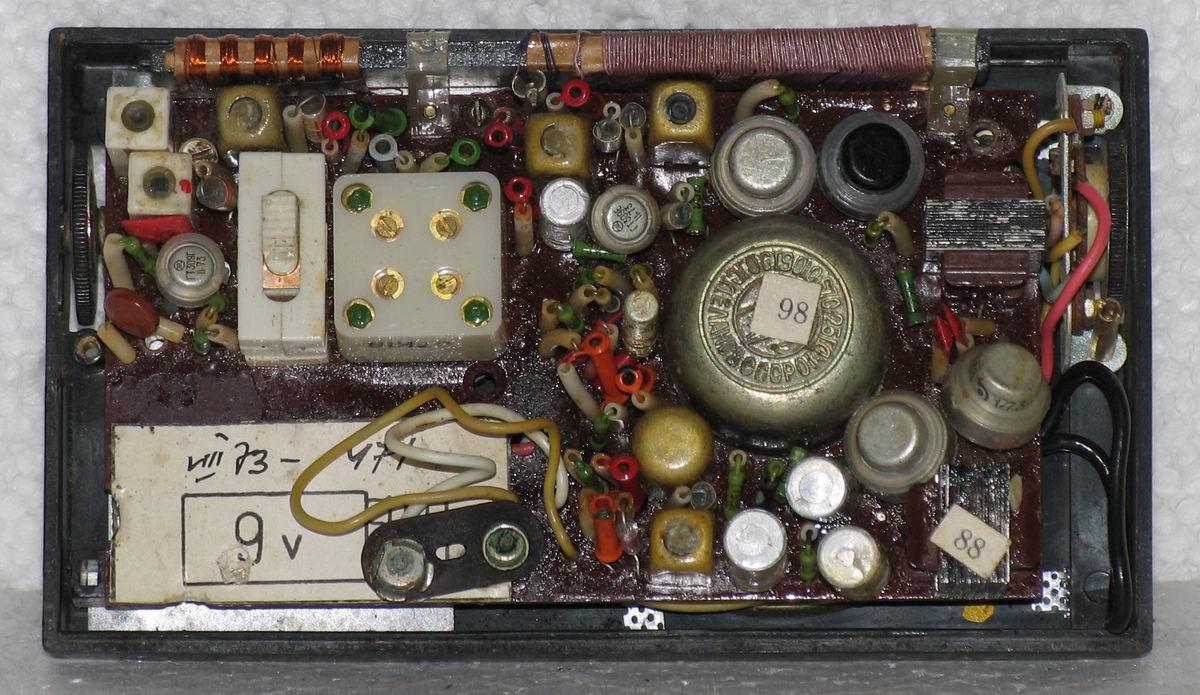I never had that particular model of transistor radio, but I did have two transistor radios when I was a kid. The first one looked very much like the TR-1, except that its case was beige. I can still remember the raised letters on its front proudly declaring that it was a “7 Transistor Radio!”. 
Of course I took that radio apart to see what was inside, and it was very much like the image at left. That radio was AM only, its audio was horribly bad, the battery didn't last very long, and I thought it was a technological marvel. The only other “portable” radios available back then were based on vacuum tubes. Those things were the size of a toolbox, and weighed 10 pounds or more. They used gigantic batteries (“B batteries”) that also didn't last long, and cost a small fortune. By comparison, the transistor radio was a technological marvel, though today we would think it was a piece of junk.Later, when I was 15 or so, I bought myself a General Electric AM/FM transistor radio, quite possibly the model at right. It was a major upgrade: a 16 transistor radio (modern radios have hundreds of thousands of transistors). I took that thing nearly everywhere I went for several years, most especially to several jobs that I had. Its audio quality was a bit better than the first radio I had, and the batteries lasted much longer – a couple weeks at a time.
These days I rarely listen to the radio unless I'm driving – and even then, I'm more likely to listen to the music stored on my phone. Back in the '60s, though, the radio stations were my primary access to music. I couldn't afford to buy many records, and there was no Internet to download music from. There were no iPods (or even Walkmen). If you wanted to listen to a diverse set of music, the radio was just about the only option open to most people. So we listened.
As I'm writing this, I'm listening to Bob Dylan – from my computer, not my radio. “Baby Blue” is on a playlist, and I can play it whenever I feel like it, not when the DJ gets the urge. Even for someone like me, who lived through the '60s, it's hard to imagine listening to music the way we did then...



No comments:
Post a Comment